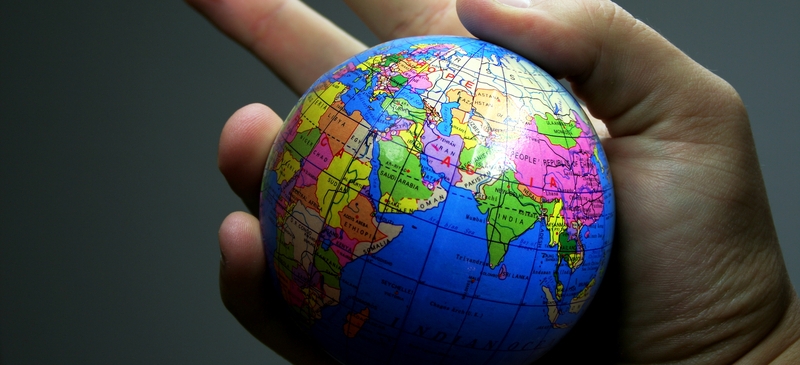
The world in 2020
The world in 2020
by Mark Leonard
By 2020, according to the Economist Intelligence Unit, the Chinese economy could overtake the US to become the largest in the world, at least when measured using purchasing power parity (PPP) exchange rates. India is expected to grow rapidly to become the third biggest economy. Alongside these Asian giants, a series of smaller powers – such as Iran and Russia – will increasingly be able to exploit their nuclear weapons and energy to increase their say in world affairs.
This shift in economic power could be all the more significant, as it is overlaid with an ideological struggle over the shape of world order. Many of the new poles of 2020 will not simply be great powers pursuing their national interest, but networks of countries united by ideas about how the world should be run. In the 1990s it seemed prophetic to talk of the ‘end of history’. Francis Fukuyama’s famous thesis was not that power struggles or even wars would end (in fact, he thought they would continue), but that the great ideological battles of the 20th century would end with “the universalisation of western liberal-democracy”. However, although the differences between major powers are less stark today than during the Cold War, the big story in international relations seems to be history’s dramatic return.
By 2020 we will most likely not see a new world order, but at least four. Already the contours of a new ideological map are emerging that splits the world across two axes. One is domestic: between democracy and autocracy. The other is about philosophies of global order: between those who want to see the world governed by law and international institutions and those who want to see it governed by power. These divisions could give rise to a quadripolar world.
To Europe’s west, the most powerful bloc will continue to be the American World, underpinned by the dollar, popular culture, and the prevalence of the Washington consensus. The goal of US foreign policy is to build a ‘balance of power that favours democracy’. Instead of seeing international institutions as the ultimate foundation of a liberal order, US foreign policy will increasingly seek to maintain US primacy, and the power of key democratic allies such as Japan and India in East Asia.
To Europe’s East, Russia and China. Although they will continue to be suspicious of each other, they are united by their autocratic systems of government, and they will increasingly use international law and institutions to protect the sovereignty of states from western interference. Together, China and Russia could turn the Shanghai Co-operation Organisation into an anti-NATO of countries that are repressive. They will also use their seats in multilateral institutions such as the United Nations to contain the United States.
To Europe’s south will be a stateless world of faith – defined neither by democracy nor the rule of law. While some countries in the Middle East – Lebanon, Palestine, and Turkey – may develop a new strain of ‘Muslim Democracy’, many won’t manage to change their politics quickly enough to keep up with social demands.
And that leaves the fourth zone. An expanded EU will share a belief in democracy with the Americans – but be alienated from them because of its belief in multilateralism and international law. Around its core, the ‘Eurosphere’ will include another 70 countries that are deeply dependent on the Eurosphere for trade, aid, investment. These will gradually be drawn into the European way of doing things, through the European neighbourhood policy that links market access to compliance with European standards on human rights, the rule of law, migration and proliferation.
Not all countries will fit neatly into one sphere or another. This will lead to a global battle to co-opt ‘swing countries’ in South-East Asia, Central Asia, the Caucasus and the Middle East. The biggest swing-state will be India.
The shift from a unipolar to a multipolar world could be almost as significant for global politics as the end of the Cold War. Like the events of 1989, it will force European strategists to change their mental maps of the world, and develop relations with countries that were outside the EU’s sphere of influence.
So what should European leaders do?
Their most urgent challenge should be to prove my predictions wrong. By pursuing a ‘disaggregation strategy’ of engaging the relevant forces in each of the other blocs, they could prevent the ‘quadripolar world’ from coming into being. For example, there are strong forces in favour of the international rule of law and international co-operation at a federal and state level in the United States, that the EU could engage with on climate change and international trade. Russia and China have major differences on energy and proliferation that could be exploited, in order to prevent these great powers from becoming a cohesive force. And in the Middle East, the EU should do all it can to play off the differences between Iran and Syria, and Hamas and Hizbollah, through policies of conditional engagement. The alternative to breaking down these emerging blocs could be a permanent sense of frustration, and a gradual shrinking of European influence in the world.
Mark Leonard was director of foreign policy at the Centre for European Reform until November 2006. In early 2007 he will set up and direct a new pan-European initiative of the Soros foundations network, to promote the EU as a model for an open society.
